Road Trips by a Family of Four – Grandparents, Mom, Teenage Daughter
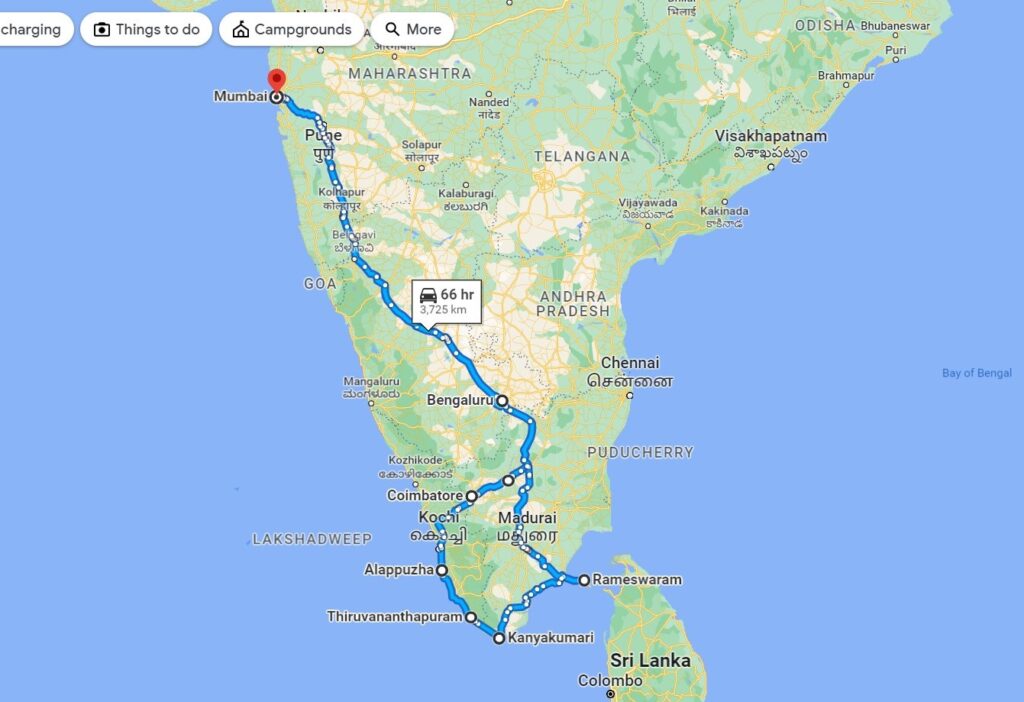
We did the length of the coastal route in the South on our 4th road trip in as many years. 3800 kms, some along beautiful seascape. It was a sentimental journey for Amma and Appa as it evoked memories of their childhood: Appa’s school in Neyyattinkara, Amma’s home and school in Nagarcoil, close relatives in Bangalore and Coimbatore, the Bhagawati Amman temple in Alappuzha, Thiruvananthapuram, Suchindram, Kanyakumari, Rameswaram and Dhanushkodi.
We departed from our home in Mumbai at 4am on a cool Saturday morning on 16 December 2017. The decision to drive the 984 km distance in 15hrs, straight to Bangalore without a halt enroute, was taken given the roads were excellent (especially on the Karnataka side). The journey however got delayed because of an accident in the outskirts of Mumbai, that held us up for over an hour. This meant we would reach our destination after sunset, not something we wanted. Bangalore was unrecognizable, having grown by leaps and bounds, and finding the direction to my uncle’s place after dusk was an uphill task. Google maps were of little help as the network was slow, which meant the directions got updated after we had passed the required turns and by-passes. We reached their home at 9:30pm and after a good dinner prepared by my aunt, retired for the night. Our stay in Bangalore was to be an overnight halt. We looked forward, however, to spending 2 nights with them on our return journey. Earlier in the day we had stopped for brunch at Sai Food Court near Kolhapur and for some tea and snacks at Kamat Upachar in Sira.
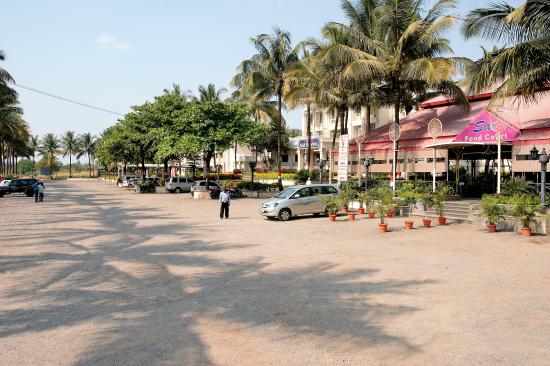
We left at 7am for Coimbatore via Erode. After a delicious breakfast at Krishnagiri, we stopped at Texvalley located off NH 544 on the Salem-Cochin Highway. Texvalley or Textile Valley was an integrated textile wholesale and retail market located in Erode, Tamil Nadu, and was proposed by the Ministry of Textiles. The complex was huge with multiple retail stores and boutiques (though some were yet to open) selling merchandise at nominal rates. We shopped tirelessly for shirts, trousers, sarees, bags and veshtis for the whole family. My daughter loved her two gorgeous pattu pavadais, that she wore to temples during the trip.
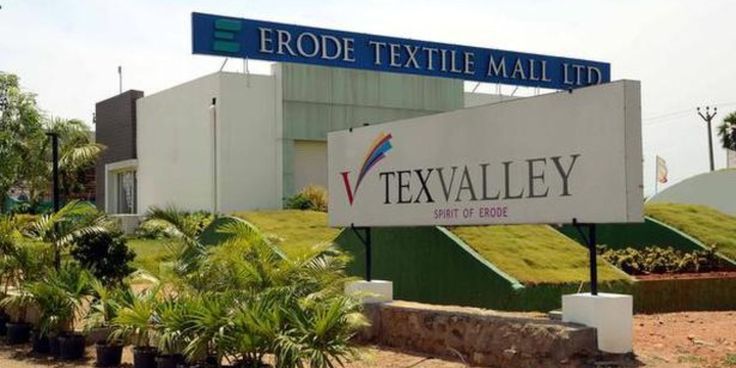
Erode to Coimbatore on NH544 was a beautiful drive. The rains had recently departed and the scenery was green all the way. The Nana Nani complex, a retirement home for senior citizens where my aunt stayed, was a little off the main road and it took us a while to locate it. We were in for a pleasant surprise. Far from being stodgy, it was a beautiful, spotlessly clean and thriving community centre. They had lovely row houses, apartments, large dining halls, badminton courts, a mini theatre, community hall, temple and huge space where senior citizens could spend pleasant evenings walking or exercising. My aunt looked her usual vibrant and happy self. Appa’s second sister, who stayed in Coimbatore with her husband, had also joined us. Amma and her sisters-in-law got along famously and laughed and talked into the night. They looked happy and content. It worked wonders on the psyche, being around friends and loved ones! After breakfast the next morning, we visited my second aunt and her husband in their home in Coimbatore. We spent another pleasant and relaxing day and left the next morning for Alappuzha.
Dressed in her beautiful pink and gold pattu pavadai, my daughter got ready early next morning for our 5 ½ hour journey to Alappuzha. We were booked at Hotel Royale Park, five minutes from Mullakkal Rajarajeswari Temple and the backwaters. We stopped first at the temple before it closed for the morning. It was a lovely, laid-back structure with huge open spaces all around. We felt relaxed and calm the moment we entered the premises. I suppose this is what a temple is about. Amma and Appa had brought a saree for the goddess. They bought tickets at the counter for a small puja for the family. My daughter ran around in the sand outside with other children. Lovely atmosphere.
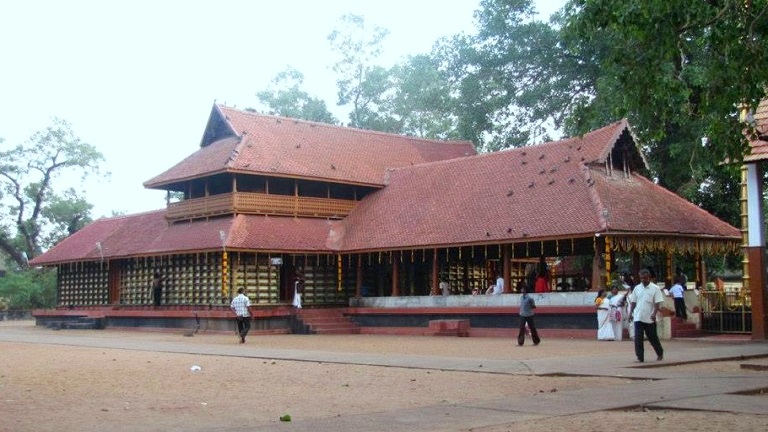
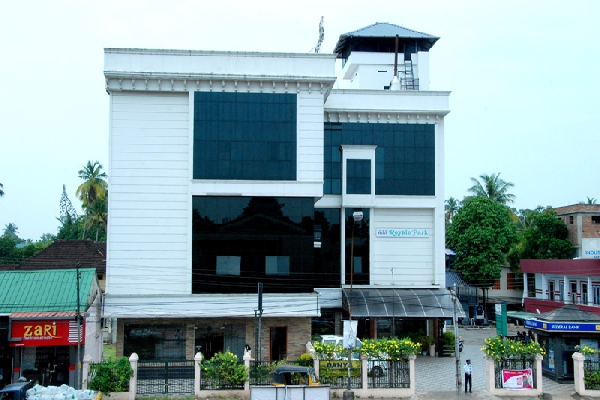
We checked into our hotel and had wonderful lunch. All our meals were delicious. We relaxed thereafter and at about 4pm walked a few metres down the road to the backwaters for a boat ride. It was a wonderful two hours on the Pamba river which opened into the Vembanad lake. The boat halted at several points (similar to bus stops) where people climbed in or disembarked. Announcements of the arrival and departure of the boat were made on loudspeakers and those not yet at the stop would come running and leap in. My daughter smiled at the laughing children who hopped in and out of the boat on their way back home from school. Wonderful life! We were picked up and dropped back at the same spot. On our way back to the hotel, we shopped at the rows of stalls that sold the famous Kerala spices and fried chips of banana, jackfruit, potato and tapioca. The whole street smelt amazing and we did not want to leave the lovely city.
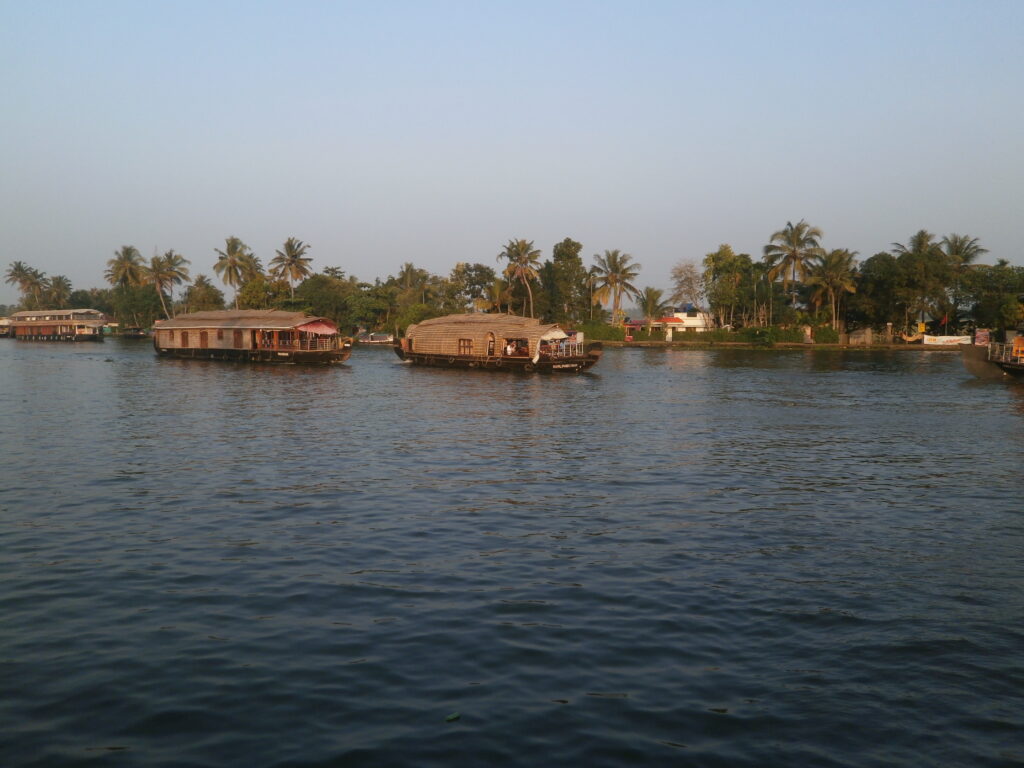
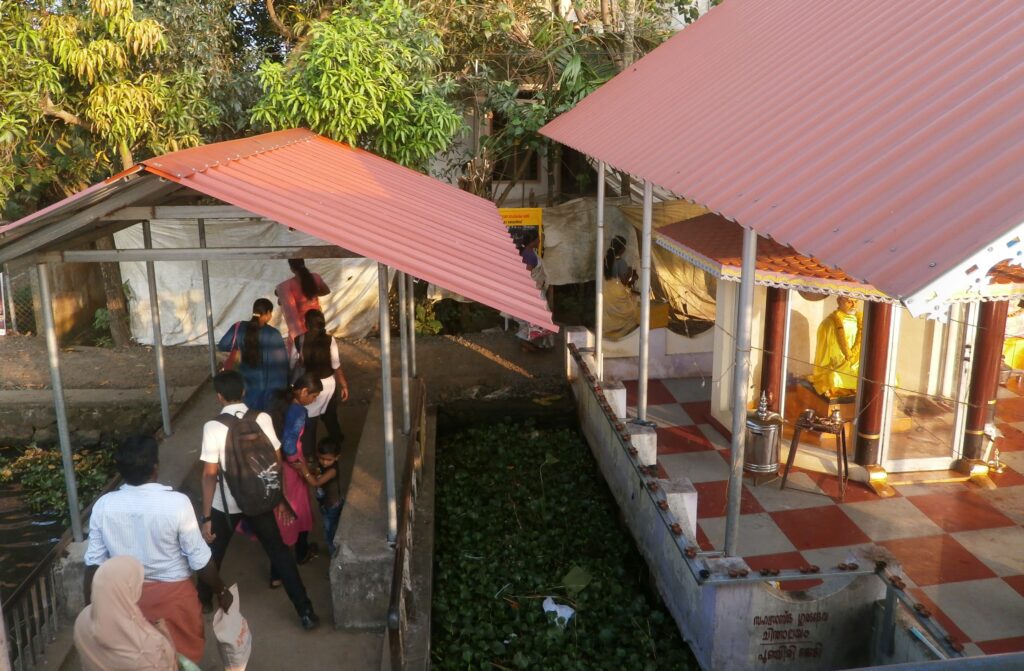
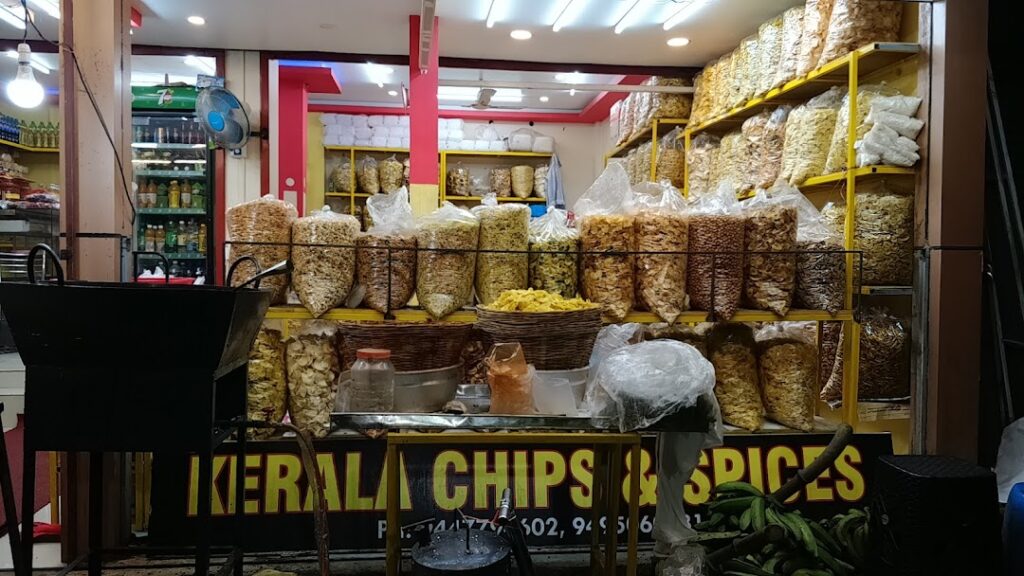
The next morning, day 5 of our trip, we left after breakfast for Thiruvananthapuram, the city of Lord Anantha, the capital city of Kerala. After 146 kms on NH66, we drove directly to the Shree Padmanabhaswamy temple. Dressed in traditional sarees, pattu pavadai, and silk veshti, we removed our footwear and stood in queue to enter the sanctum to view the 18-foot-long Lord Vishnu reclining on his serpent Anata Shesha. Our first instinct was to prostrate ourselves, but Appa had cautioned us that devotees were not allowed to prostrate in the mandapam near the sanctum. It was traditionally held that anybody who prostrated there had to surrender all his possessions to the Lord. Only the King of Travancore may do so as he had given away all his wealth to the temple.
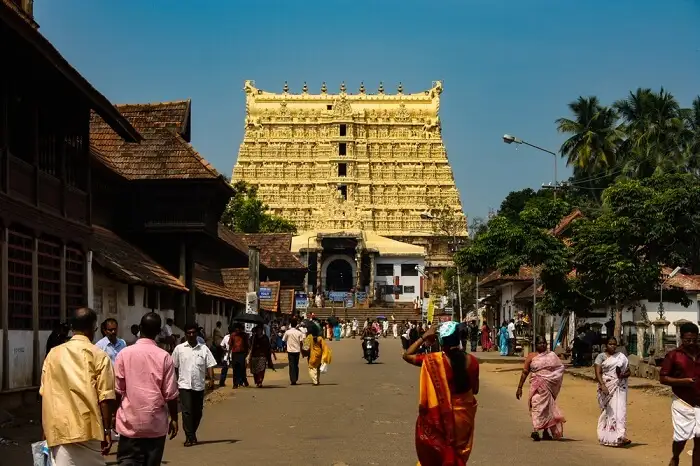
The reclining deity could be viewed in three parts, across grilled windows. We walked past slowly in queue but once we reached the end, I came back as I hadn’t had enough. It was dark inside and I could not see his calm face clearly, covered as he was in silk and gold. We felt fortunate indeed. Below the reclining figure was said to be underground vaults that contained immense wealth collected over the years including tons of gold jewellery, gold coins, diamonds, rubies, emeralds and other precious stones and metal, making this the richest temple in the world. Added to this was the wealth surrendered by the Travancore Royals to the Lord, a tradition started by the great King Marthanda Varma, in whose lineage the nephew was crowned the next king and not the son.
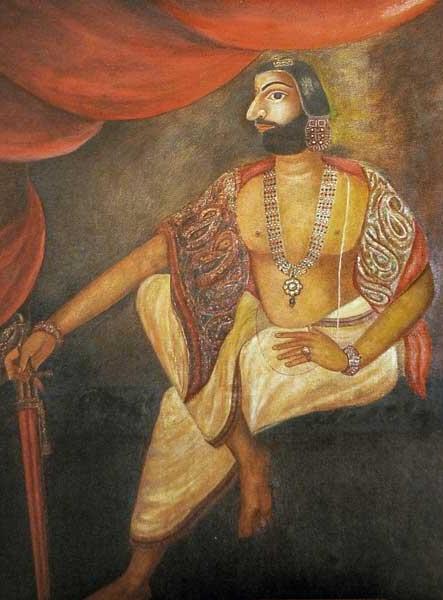
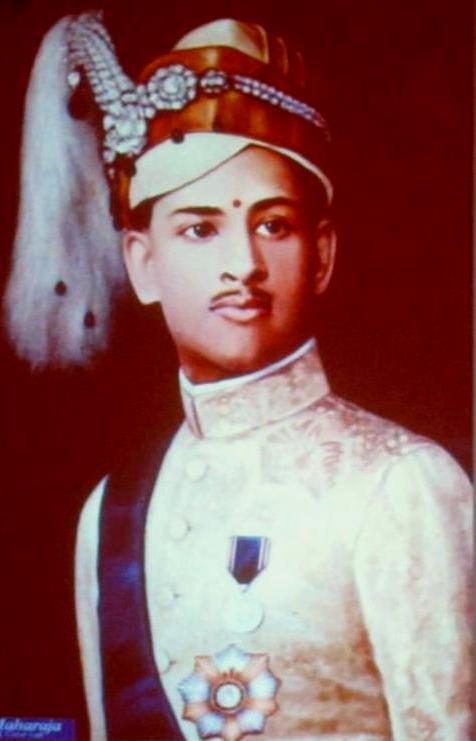
We stayed at the erstwhile royal guest house of the palace, The RangaMaalika, which had 8 rooms to let. Beautifully appointed with wood, coir and bamboo furnishing and photographs of the stunning Raja Ravi Varma (also from the royal Travancore family) paintings on walls, we felt part of the era for the time we spent there. We had a lovely Kerala meal in the dining hall and the paal payasam prasad they had procured in the morning for us from the temple, at my request. Delicious! After a short rest we went to the Palace Museum in the same compound. Portraits of the various royals were on the walls. Amma was delighted to see the portrait of the handsome Chithira Thirunal Balarama Varma, the last ruling Maharaja of the princely state of Travancore, for she had received two cups from him at school for excellence in sport. My daughter found the amorphic art section of the museum very interesting. She also spent most of her time on a swing under a tree, a slim piece of bamboo hung by 2 thick ropes. We had dinner at a nearby restaurant, Villa Maya, and retired for the night.
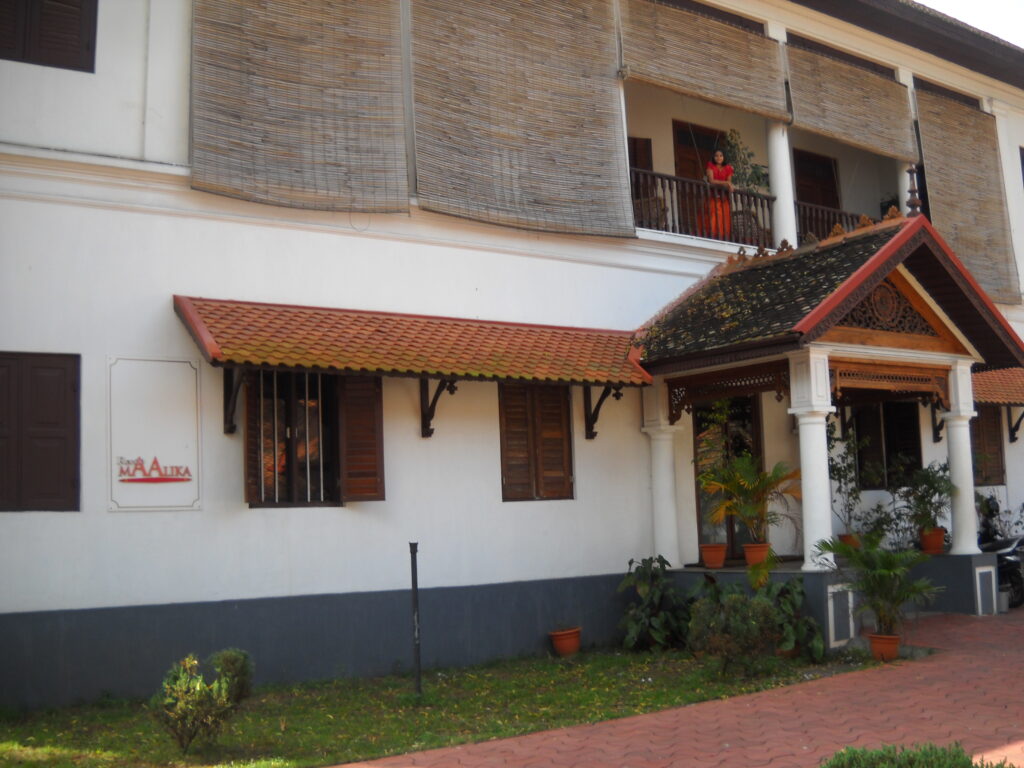
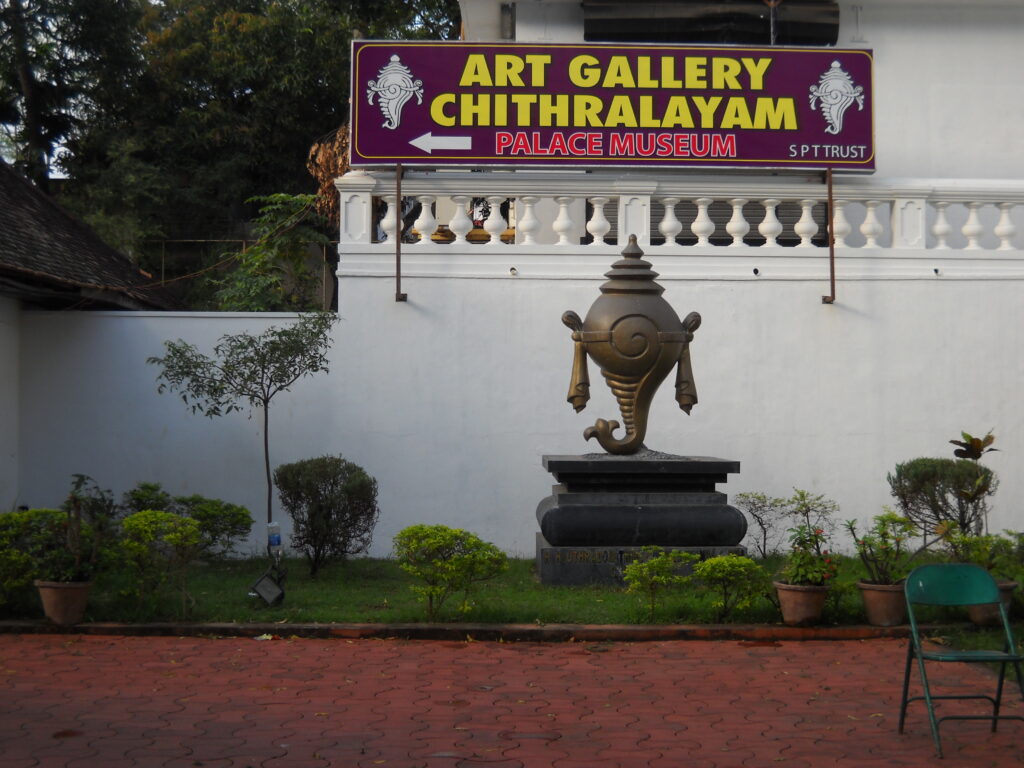
Neyyattinkara was a small municipality at the southern tip of Thiruvananthapuram, where Appa stayed with his grandparents for a few years. He attended the Neyyattinkara Higher Secondary School which was established in 1881. It took us 45 minutes (24 kms) to get there via the Trivandrum-Nagercoil highway. We drove through crowded streets with commercial establishments everywhere that Appa found unrecognizable. We enquired with a local and found Appa’s school to our right, that he spotted immediately. We got down and Appa escorted us inside, pointing out familiar classrooms. A few teachers came forward to meet us. One of them stayed on to talk to Appa, and realizing he was an ex-student and now an ex-scientist, touched his feet with respect. We got permission to see the ground behind and Appa pointed out the flag-pole and explained how they would play there during breaks. He was so happy, and we were very glad for him. We missed seeing his house though, as the locals did not seem to have heard of it.
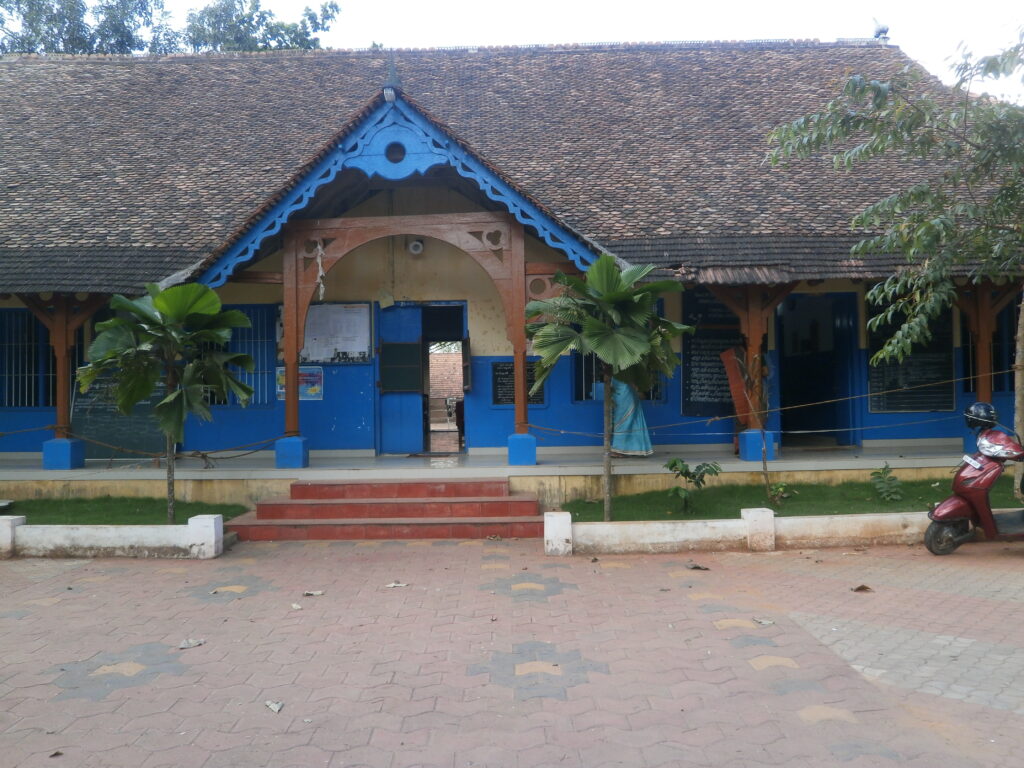
We then visited the local Shree Krishna temple that Appa and his uncle would visit every day. There was the small Neyyar river behind the temple that they would swim across before their prayers and Appa narrated old stories of near mishaps during those watery excursions. The river was way below its mark after all those years. In the temple we saw the relics of a huge jackfruit tree with a hole, within which King Marthanda Varma had stayed hidden as a young boy when enemies from powerful houses tried to kill him in order to deny him the throne.
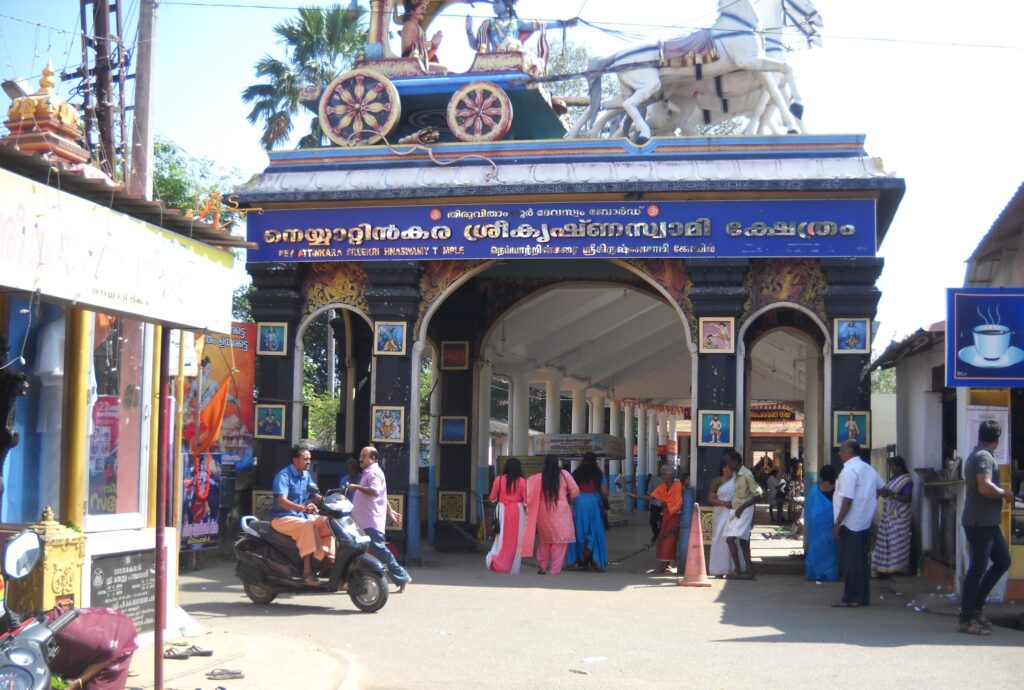
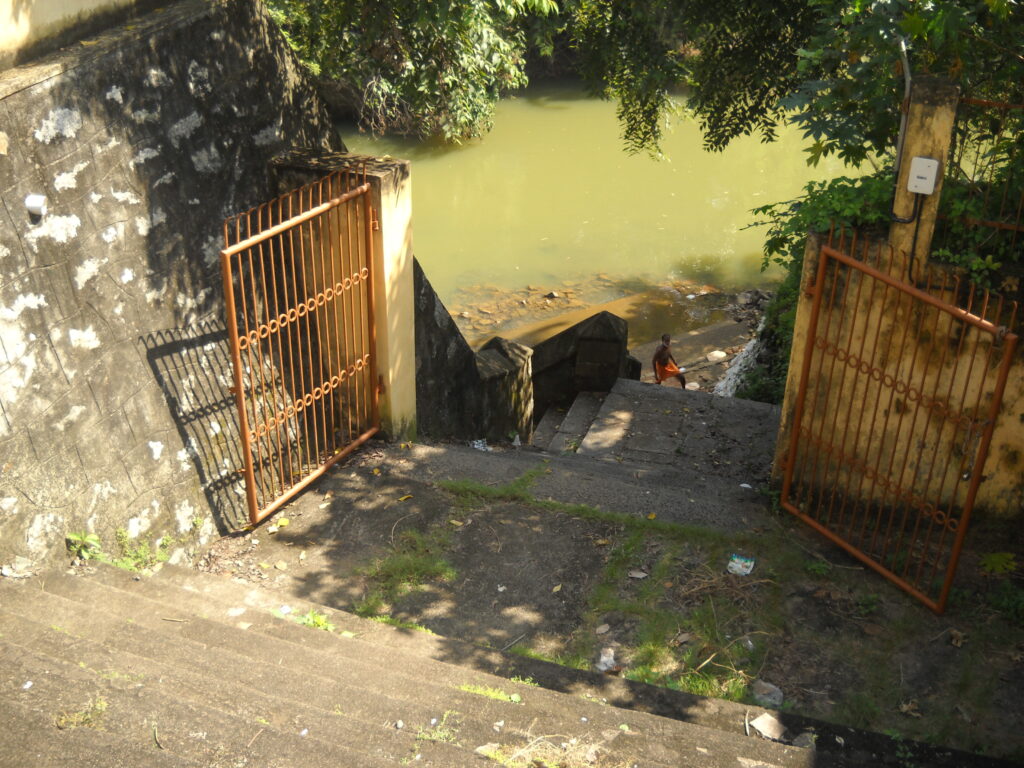
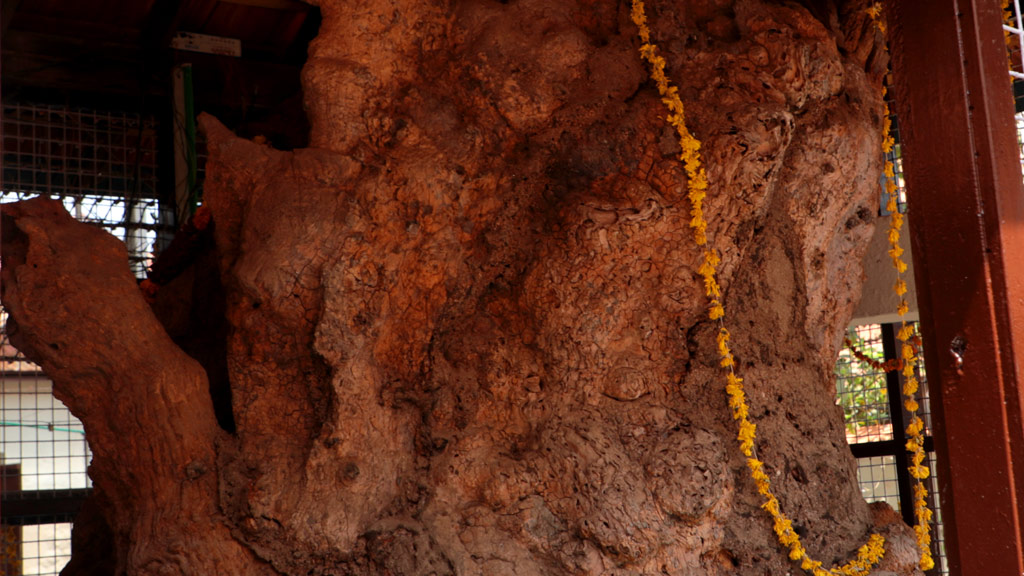
We continued our drive to Nagarcoil, Amma’s birthplace. We searched for Parvadhavardhini street, on which her house ‘Narayananivas’ was located. Delighted to see it again after more than 60 years, Amma took permission from the present owners to show us around. The large, beautiful house, with Burma Teak ceilings and doors, was made into smaller flats. The well had been covered and the cow-shed converted into another living quarter. The jackfruit tree was gone but the coconut tree remained. Amma was so happy. We then drove to her school, the famous Sethu Lakshmi Bai (SLB) English High School where she and her brothers had studied, and where her father had been a teacher. Grand memories!! We had a sumptuous, three-course lunch on a plantain leaf at Anandha Bhavan and left for Kanyakumari.
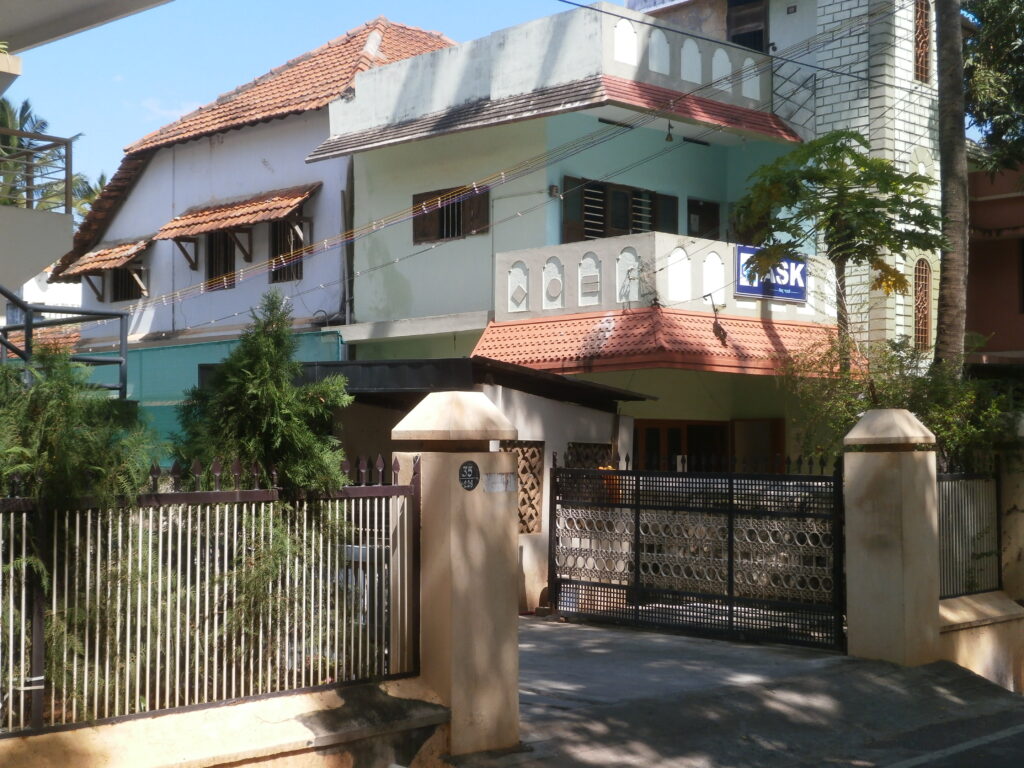
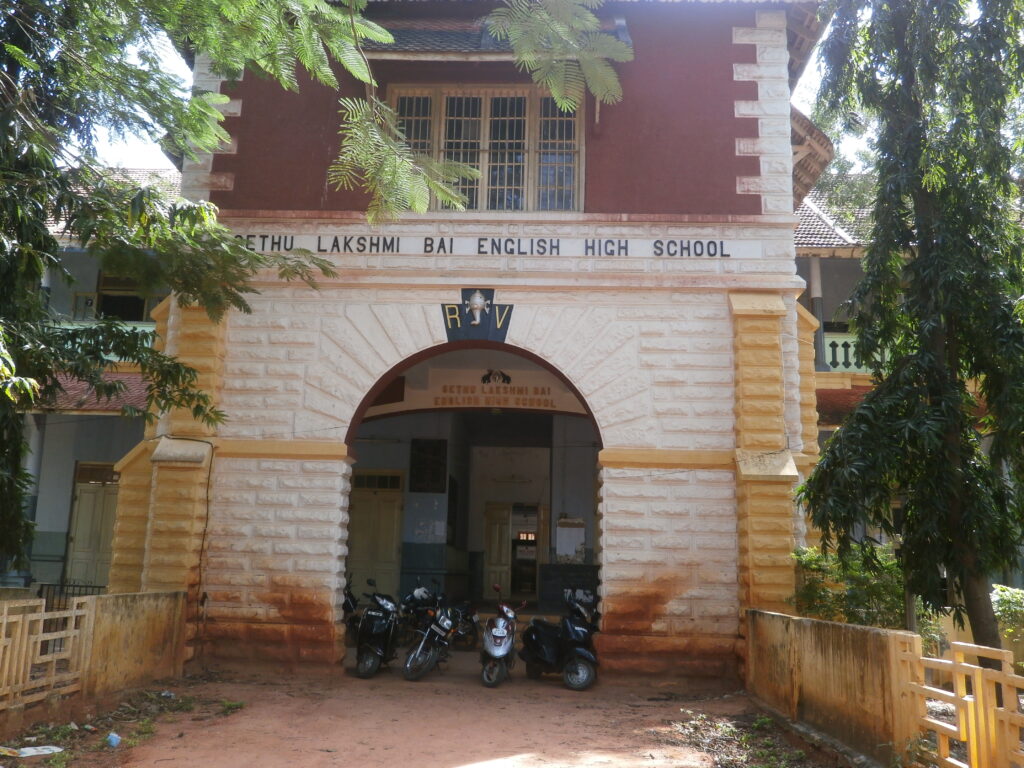
We took the NH6 from Nagarcoil and were in Kanyakumari within 40 minutes. It was a lovely winding path to get out of the city and join the highway. We had booked a cottage at Vivekananda Kendra, a stunningly beautiful place with peacocks walking about freely and fearlessly. There was access to a private beach where one could view the sunrise in the mornings, a yoga centre, canteen serving delicious meals and huge open spaces. It was equipped with cottages, flats and dormitories for visitors to Kanyakumari.
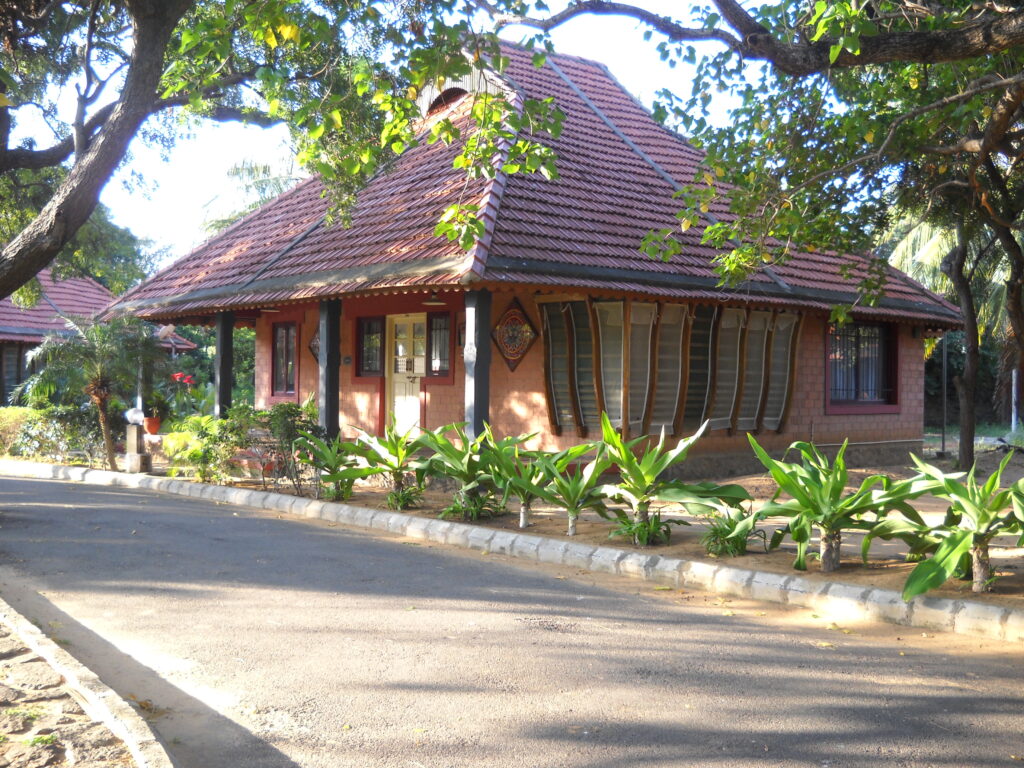
The next morning, day 7 of our trip, Amma, my daughter and I left for the Nagaraja temple in Nagarcoil (the temple was shut the previous afternoon) and from there to Suchindram to see the Sthanumalayam temple. We bought a long, heavy, tulsi garland for Hanuman, who, in his Visvaroopa stood 22 feet tall. The priest climbed on a ladder to don the garland round Anjaneya’s neck. My daughter was overawed with the spectacle. She also found the musical pillars fascinating. Appa was awake when we returned and we all proceeded for breakfast to the canteen.
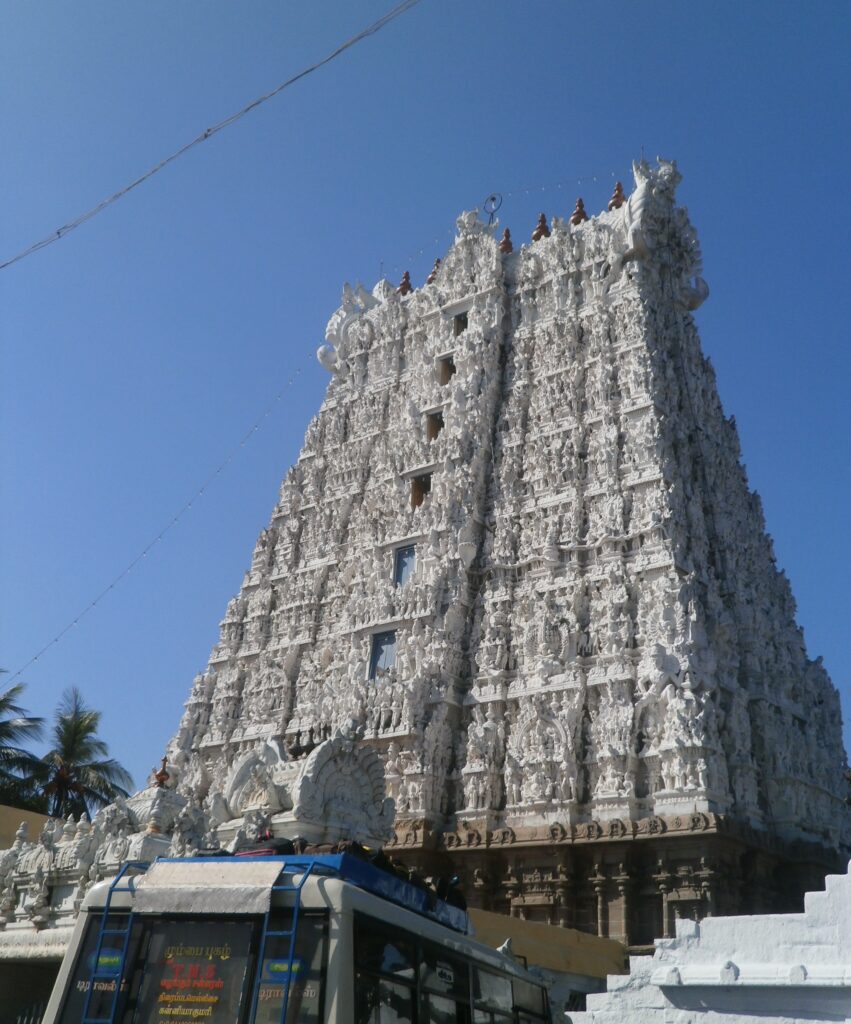
We left for the over 3000-year-old Kanyakumari Devi temple thereafter. Standing in queue to get a glimpse of her lovely face, my daughter searched for the famous diamond nose-ring on the goddess. The story goes that the diamond’s sparkle through a hole in the stone wall caused ships to crash into the rocks as sailors mistook it for light from a lighthouse. The hole was sealed later, it was said. We walked down to the Triveni Sangam, where the 3 oceans met – the Bay of Bengal, the Arabian Sea and the Indian Ocean. We sat on the rocks and the breeze almost knocked us over. It was fantastic!! My daughter joined some schoolgirls in the water and they had a wonderful time holding hands and dunking in the waves. It was a great day.
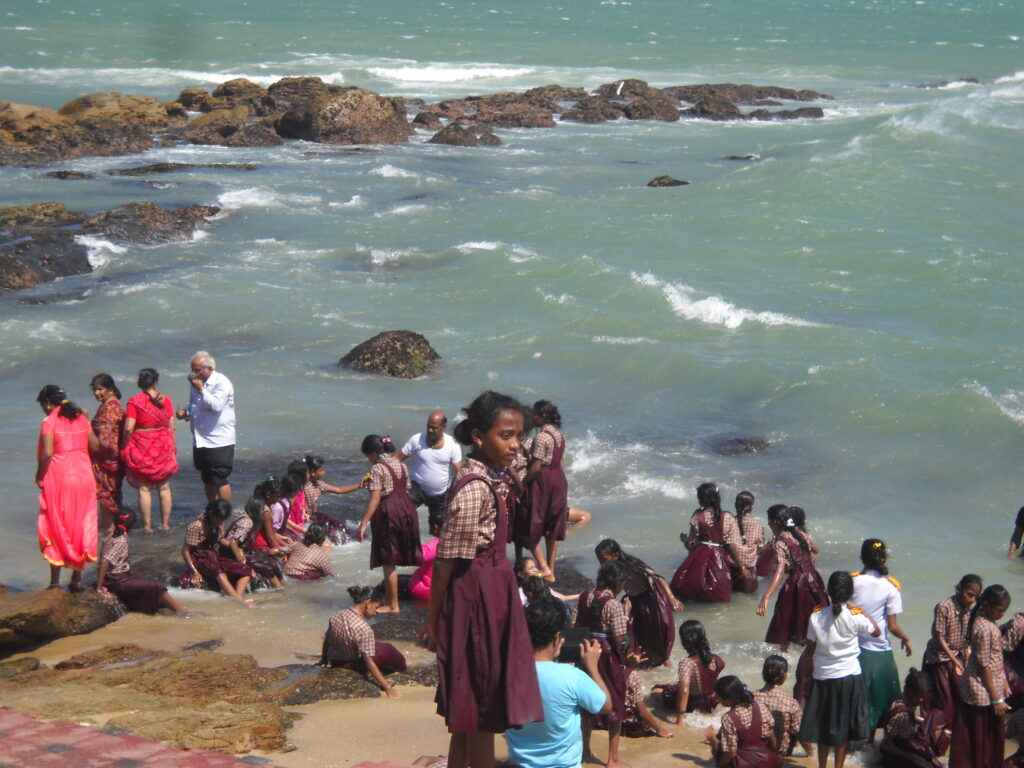
We left early next morning for Rameswaram, a 310km, 5 ½ drive on the NH44 and NH32. The Pamban Bridge is a railway bridge that connects the town of Mandapam in mainland India with Rameswaram on Pamban Island. It was an engineering marvel of its time! There was a parallel bridge built to handle road traffic. And the view is to be seen to be believed! There was a long queue on the bridge that morning. The President of India, Ramnath Kovind, and his family were in Rameswaram at the temple and no one was allowed to enter the municipality for security reasons. Rooms that we had booked in advance were also occupied by security personnel. We waited for over 2 hours before we spotted the 3 helicopters carrying away the President and his entourage. The vehicles began to move and we drove to our TTDC Guest House, Hotel Tamil Nadu, bang opposite the Bay of Bengal! Fantastic view from our balcony and walkable distance to the temple. And superb meals at Vasantha Bhavan, near the guest house. We took a walk on the promenade in the evening and returned for rest and sleep.
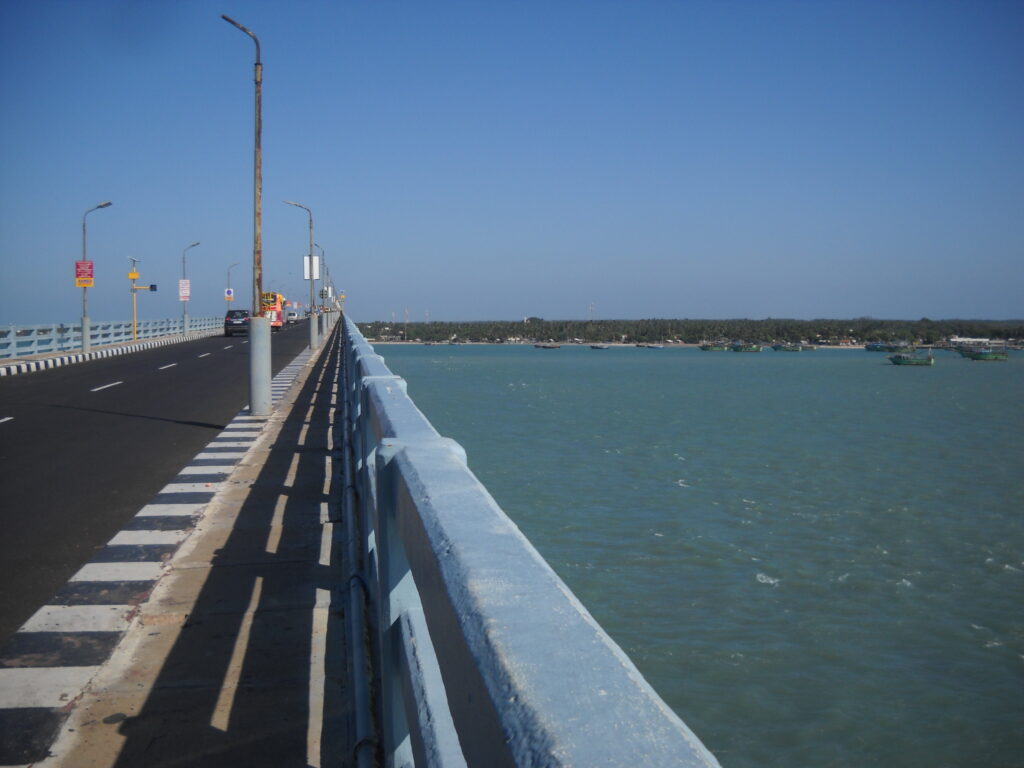
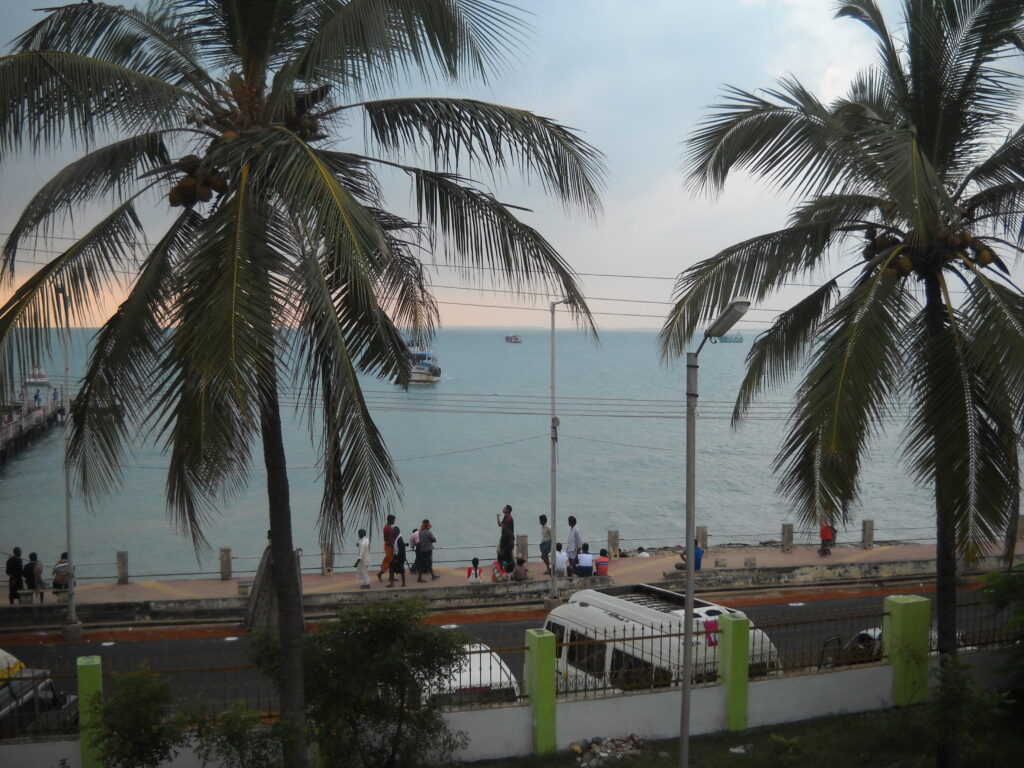
We awoke at 3am the next morning and changed into traditional wear without having a bath. We were to bathe in the Bay of Bengal, you see! We left at 4am for Agnitheertham. Agnitheertham is said to be the place where Lord Rama worshipped Lord Shiva to wash off the sins of killing Ravana. It was a sacred place and pilgrims believed that taking a bath there would wash away the sins of a life time. The sea was very calm and ideal for bathing. We joined a multitude of people, and holding hands, immersed ourselves into the water, surfacing immediately. This was repeated 3 times. Thoroughly soaked, we walked 200 metres to the great complex of the Ramanathaswamy temple. We bought tickets and waited in queue for more than an hour to gain entry into the temple. Once inside we were directed to wells that had waters from the holy rivers of India, sprinkled on the masses by the priests at regular intervals. The huge crowds prevented us from visiting more than 7 of the 22 wells. Appa and my daughter changed into dry clothes and we bought tickets for special darshan of the deity.
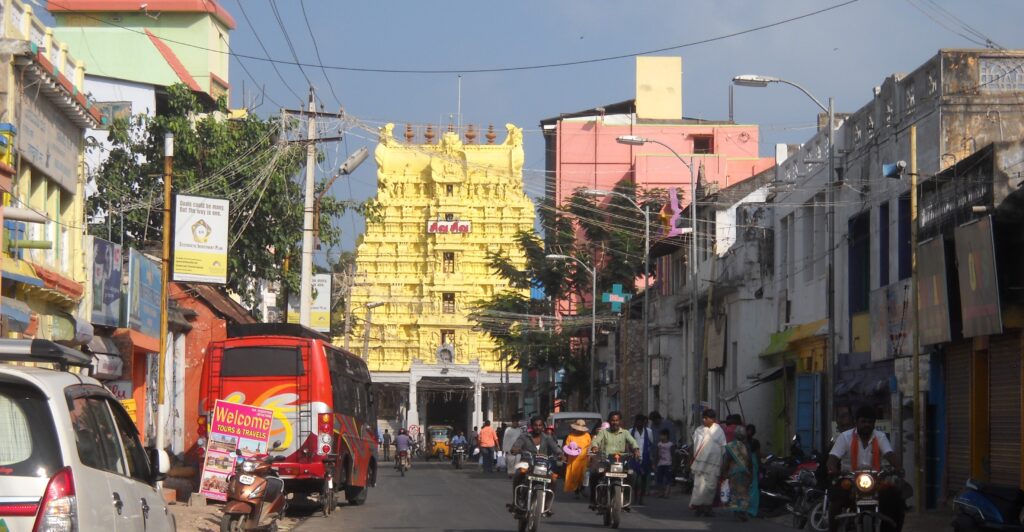
The size of the temple was astonishing. It was built by King Muthuramalinga Sethupathy. It had the longest corridor of all Hindu temples. The Pandyas and Jaffna rulers contributed to expanding this awesome structure. We lost Appa in the crowd, and after a search in all directions, my daughter found him standing in the gents’ queue for darshan. Relieved to be united, we all got took the blessings of Lord Shiva and Goddess Parvati and headed back to our hotel.
After a wonderful breakfast of idiappam and coconut milk, we left for Dhanushkodi, the southernmost tip of Rameswaram, 18kms away. We could see the tip of Sri Lanka across the ocean and imagined how Lord Rama and his soldiers comprising bears and monkeys would have make the crossing possible to rescue Sita. We wandered along the beach for a while and munched on spicy, crunchy cucumbers sold by locals in wicker baskets. My daughter hunted for sea shells. Amma and Appa wet their feet in the waves. It was all exquisite and wonderful. We left reluctantly and stopped at Dhanushkodi village that was devasted by the 1964 cyclone. We picked up some jewellery made of sea shells from stalls. On the way back to Rameswaram we stopped at the Kondaramaswamy temple, where it is believed Rama crowned Vibheeshana king of Lanka after his brother, Ravana’s death.
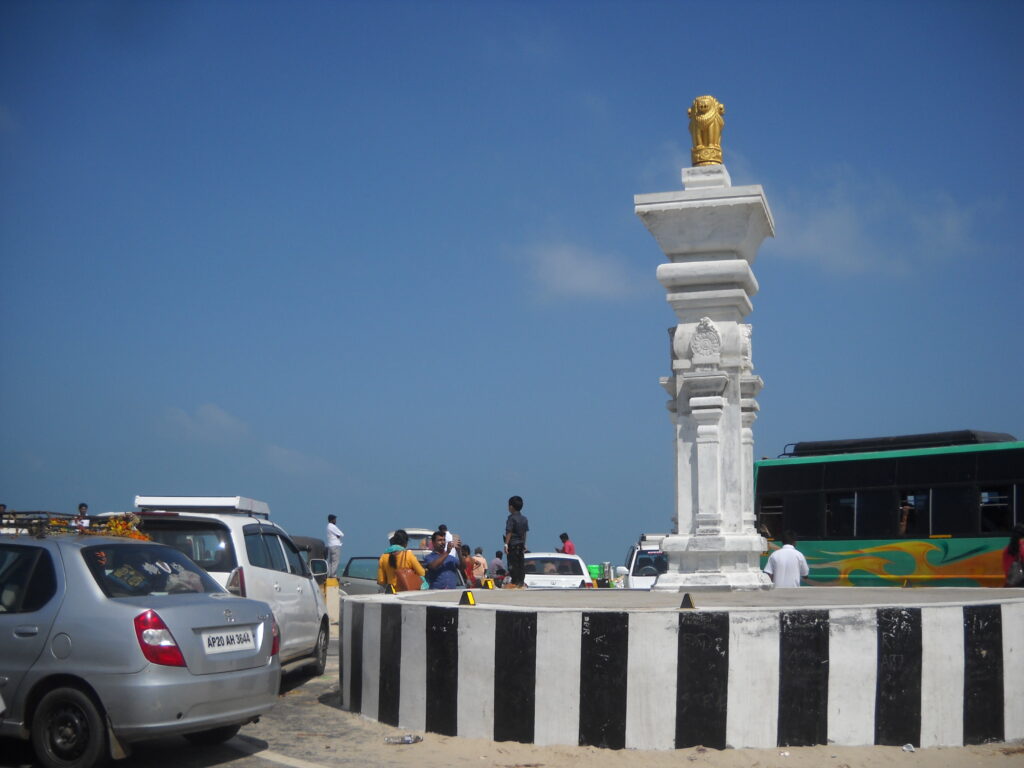
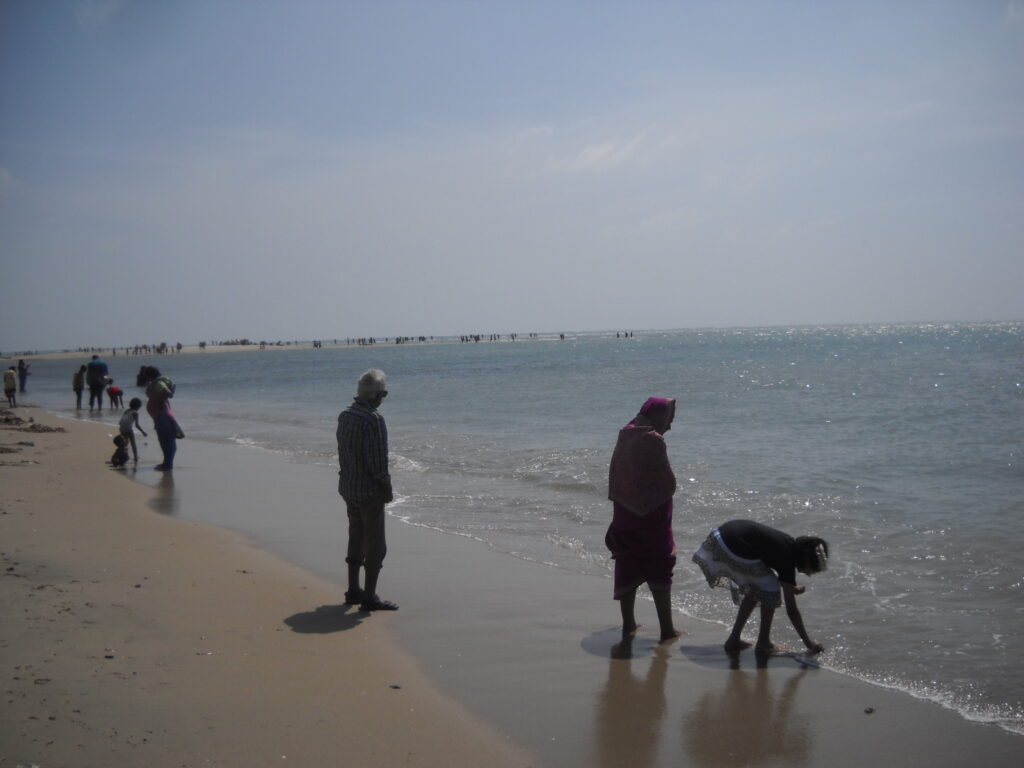
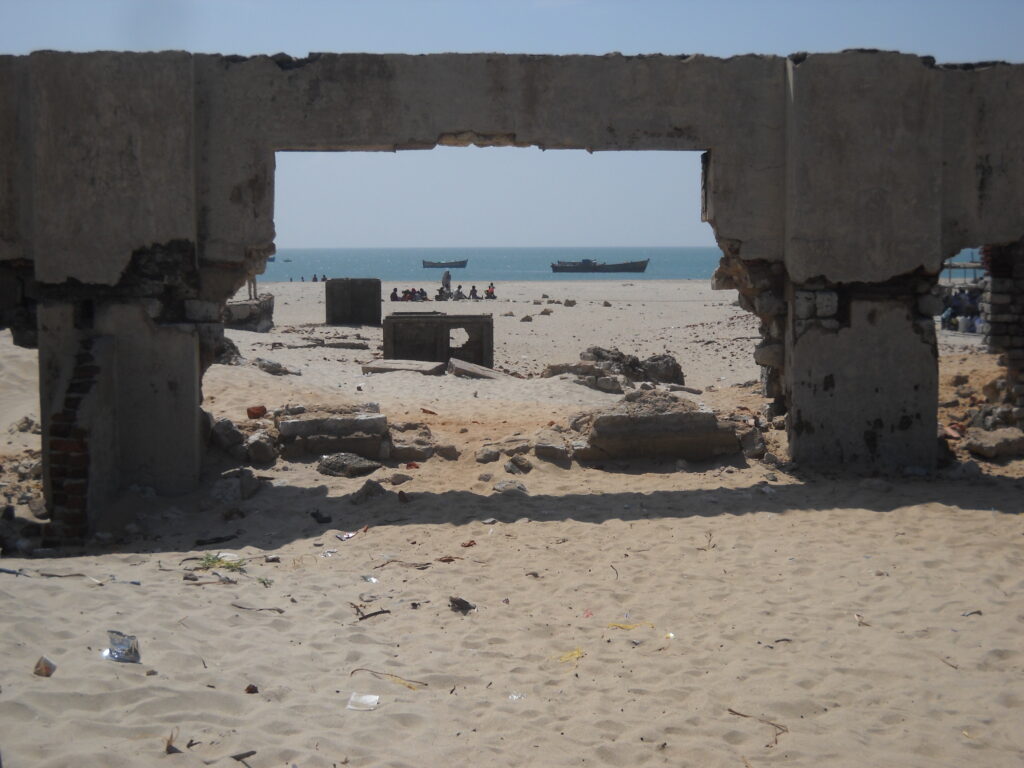
At Rameswaram, we visited Dr APJ Abdul Kalam’s childhood home, now a museum. He was a great aerospace scientist and a former President of India. My daughter cherished his words:
“Don’t walk ahead of me, I may not follow. Don’t walk behind me, I may not lead. Walk beside me and be my friend.”
It was the 10th day of our road trip and we left for Bangalore via Madurai. On the way, we stopped at the Panchmukhi Hanuman temple at Rameswaram.
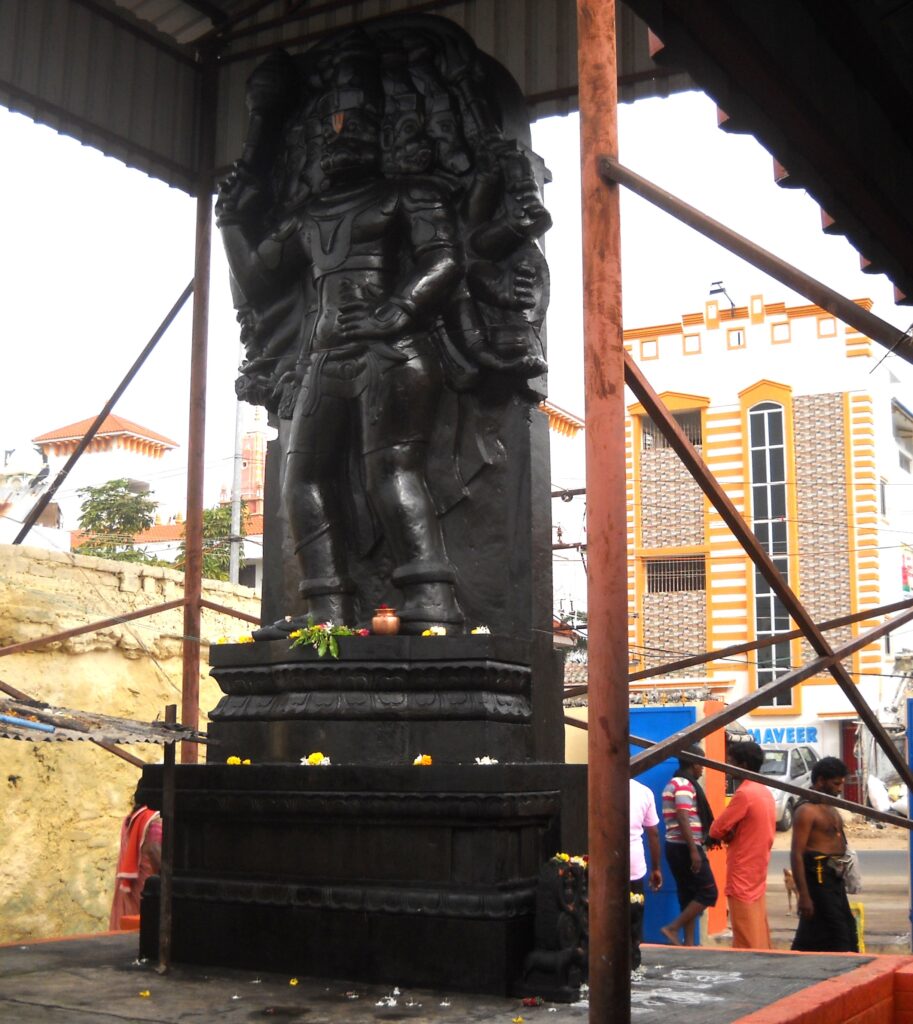
At Bangalore, we spent two wonderful nights and a day with my uncle and aunt and carried with us sweet memories of our stay there. The final morning, we left for our home in Mumbai, arriving at 5:30pm, grateful for what we had seen and experienced in this wonderful trip. As always, Appa went to the temple the next day and broke a coconut as an offering of thanks to Ganesha.
Leave a Reply